To promote your restaurant effectively, start by implementing the following strategies:
- Add reservation links to Google Business
- Make dishes "Instagrammable"
- Improve local SEO for better online visibility
- Follow a structured marketing framework
- Send effective email marketing campaigns
- Focus on building customer loyalty
- Collect and use guest data
Now, let's look a bit deeper into what a restaurant marketing strategy is and why it matters.
What is a restaurant marketing strategy?
A restaurant marketing strategy helps increase sales and profits by attracting guests to your restaurant. It includes tactics like advertising, promotions, events, customer loyalty programs, customer service, menu design, pricing, and location to promote your business effectively.
Using data analytics allows restaurants to personalize these strategies. With accurate insights, marketing campaigns can be tailored to customer preferences—resulting in more relevant offers and improved customer satisfaction.
Pro tip
Eat App’s new Loyalty Suite helps restaurants reward guests and boost repeat business with customizable rewards and seamless integration. Learn more here: Eat App Loyalty Suite.
Why is a restaurant marketing strategy important?
A restaurant's marketing strategy is key to its success. To attract guests, you need to promote your restaurant, and you don’t have to spend a lot of money to do so. Affordable and effective methods include social media campaigns, SEO, and email marketing.
People looking to fill their stomachs now have a dizzying array of possible options, and restaurants must compete for customer attention beyond location.
An effective restaurant marketing plan helps you stand out from the competition by applying a clear strategy for restaurant visibility, loyalty and engagement.
How to build a restaurant marketing strategy
I set clear marketing goals, like increasing brand awareness or driving sales, to stay focused and measure success. I conduct market research to understand my competition and identify opportunities, using this to create a unique value proposition.
I develop a marketing mix (product, price, promotion, and place) to align my plan with my business goals and audience needs. After implementing my strategy, I track progress and adjust as needed to ensure success.
I also recommend integrating Search Engine Marketing (SEM) to improve your restaurant’s discoverability. SEM ensures your restaurant appears when hungry customers are actively searching online. This visibility drives targeted traffic and boosts reservations.
Every strategy for restaurant success should include SEM, social media, and customer engagement tools as part of a holistic restaurant marketing plan.
Let’s continue with more marketing tips and ideas below.
Best restaurant marketing strategies
1. Add reservation links to Google Business
Yelp is becoming less relevant as Google dominates local restaurant searches. Skift's Megatrends highlighted this shift. If you haven’t already, set up a Google Business account to showcase your location, photos, and website links.
Once set up, use Google Business to boost local discovery and start driving more revenue.
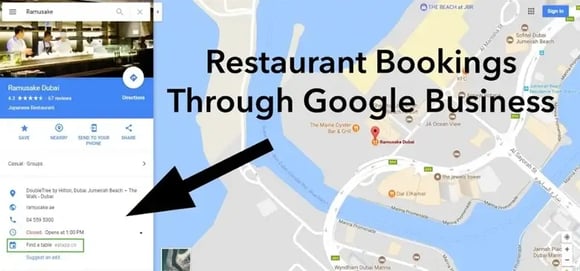
One way to increase reservations is by adding a reservation link to your GMB page. Google now lets you add a link under the 'reservations' field, connecting directly to your website or reservation system.
This provides a frictionless way for people to make reservations from your Google profile. Some restaurants see up to a 20% increase in online reservations with this feature.
- Interested in adding a "Reserve a Table" button to your restaurant's Google profile? Click here to sign up for Eat App for free and instantly activate your button.
2. Send email marketing that works (ie. personalized and automated)
Many restaurant marketing guides suggest sending a generic email newsletter, but this often gets overlooked. I recommend restaurants customize their emails based on past interactions. For example, content should differ for someone who visited once in the last three months versus a frequent guest. Using customer data and email automation tools, like those from Eat App, allows for targeted, relevant emails that stand out and drive better engagement.
3. Send birthday reminder emails
As a marketing expert, I also recommend that restaurants take advantage of birthdays, which bring in larger parties and higher spending. To capture these diners, collect birthday info through phone calls, surveys, or online bookings.
Store it in a CRM, then send a personalized email 2–3 weeks before their birthday, highlighting why the restaurant is the best place to celebrate. Offering a special discount or perk can make the deal even more attractive.
%20(1)-1-1.webp?width=400&height=301&name=Maintain%20your%20brand%20online%20(6)%20(1)-1-1.webp)
4. Connect your front-of-house to your website with live chat
I believe live chat is the best way to connect with customers online. It's instant, like texting, and everyone loves that. Letting your staff handle the chat gives potential diners direct access to your restaurant with a personal touch. They can ask questions and book tables right in the chat window. Free live chat options are readily available online – just Google "Free Live Chat for Website."
Pro tip
Even better, platforms like Eat App offer direct WhatsApp messaging, which takes convenience to the next level. It's a powerful engagement tool, and a great way to outshine the competition.
- Want to know about our WhatsApp feature? Request a demo today!
5. Try the online reservation platforms
Online booking platforms play a key role in fine dining restaurant marketing, reaching millions of diners each month. While OpenTable was once a dominant option in the US, services like Eat App are now emerging as top contenders, offering a more tailored experience based on your location.
Further reading
These platforms provide user-friendly websites and apps that make booking seamless, something many customers truly appreciate. Incorporating them into your marketing strategy can significantly boost your restaurant's visibility and reservations.
Many upscale restaurants factor these services into their annual marketing budgets. However, it’s worth evaluating whether these platforms are cost-effective for your business. If you're looking for an affordable alternative, Eat App’s free reservation system is an excellent solution.
While online booking platforms like Eat App and OpenTable are essential, it’s also critical to leverage other powerful discovery and community tools.
-
TripAdvisor – A global platform that can significantly boost your visibility by showcasing verified guest reviews and top rankings. Maintaining an optimized TripAdvisor profile improves credibility and helps travelers find your restaurant more easily.
-
Happy Cow – Perfect for vegetarian and vegan-friendly venues, Happy Cow connects your restaurant to eco-conscious diners seeking plant-based options. Listing here strengthens your brand image and taps into a rapidly growing audience segment.
-
Reddit – Communities like r/food, r/vegan or local subreddits offer excellent engagement opportunities. Sharing authentic stories, menu updates, or event announcements on Reddit can organically increase awareness and customer trust.
Integrating these platforms into your restaurant marketing plan adds depth and reach to your strategy for restaurant growth and online visibility.
6. Work on the presentation of dishes so they are "Instagrammable"
'Instagrammable dessert' is a relatively new phrase in the world of restaurant marketing.
The basic idea is that the plating and presentation of a dish encourage people to take photos and share them online - especially on Instagram where hashtags like #foodporn are extremely popular. (We're talking millions of pictures.)
-1.webp?width=589&height=392&name=Black-Tap_Milkshakes%20(1)-1.webp)
Tips to make your food "Instagrammable"
- Use ingredients with matching colors
- Create an experience or spectacle worth video-recording
- Make dishes that look good when photographed together
- Choose bright, bold colors
- Use flattering restaurant lighting
- Keep plates clean
- Think about the table setting too
- Add decorative elements that make people want to take pictures
Want more ideas? Check out our guide on Instagram post ideas for restaurants.
7. Run coupon and discount campaigns
Offering discounts or deals like "Buy One, Get One Free" can attract customers, especially for first-time visits. For higher-end restaurants, discounts can dilute your brand, so be strategic about how often you run them. When used effectively, they can bring customers back for repeat visits.
Pro tip
With Eat App you can create discounted coupons, and attach them to your shift. Plus, you can share them via WhatsApp.
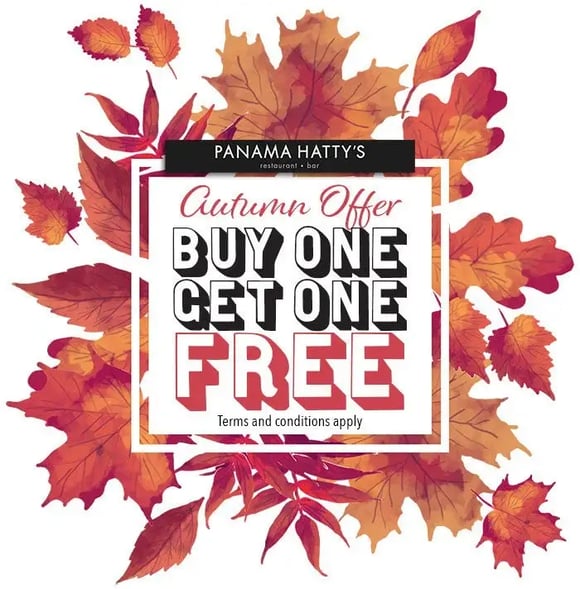
8. Focus on customer loyalty
Customer loyalty is essential for repeat business. Loyal customers are cheaper to market to, and they often help spread the word through word-of-mouth.
Consider setting up a loyalty program to encourage repeat visits. Whether you run it in-house or use an app, a well-designed loyalty program can offer discounts or free items to keep customers coming back.
Quick tip
Eat App’s loyalty engine automates point awards based on spending, integrated with your reservations and CRM. Loyalty members visit 20% more often and spend 20% more per visit than non-members. A small boost in retention can lead to a significant profit increase.
9. Local online ads
Most of your customers are local, so geo-targeting your ads is a smart move. Platforms like Google Ads, Facebook, and Instagram let you target people within a specific location. If you’re running online ads, make sure you’re targeting the right audience near your restaurant.
To take this a step further, implement geo-fencing. By sending targeted offers to smartphones when potential customers are nearby, you can convert walk-by traffic into loyal diners. Timing and relevance are key here.
10. Improve local discovery online aka Restaurant SEO
Many people search for terms like 'restaurants near me' every day. In fact, 'restaurants near me' gets 20 million searches every month globally. To ensure your restaurant shows up in these searches, make sure your Google Business profile is up-to-date, your website’s location info is correct, and that you're getting positive reviews.
11. Have an awesome online menu
Your menu is one of the most viewed parts of your website, so make sure it’s part of your marketing strategy. It should be easy to read, mobile-optimized, and accessible right from your homepage. And remember, keep the font simple and readable, no fancy cursive.
12. Retargeting ads
Retargeting ads help bring back visitors who checked out your website but didn’t make a reservation or purchase. It’s a powerful way to follow up with potential customers. Once set up, retargeting can significantly boost your conversion rates.
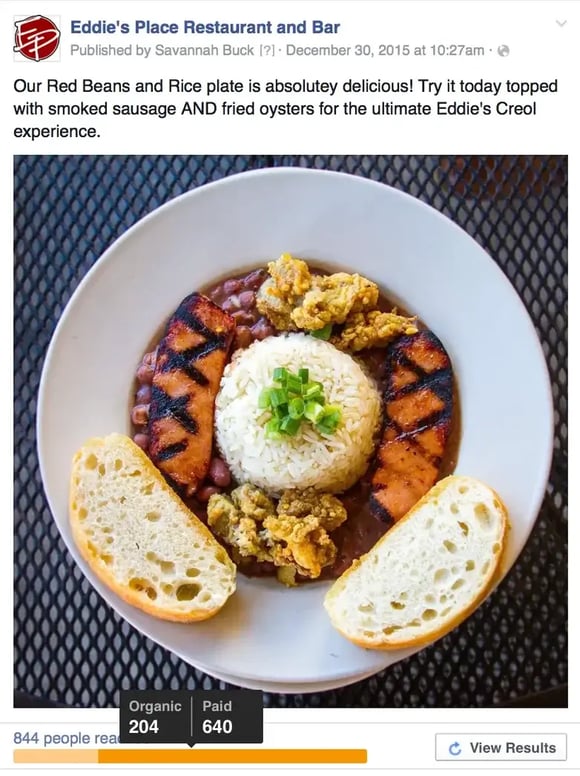
13. Build an unstoppable brand
Your restaurant’s brand identity is key to customer retention. A strong brand is built around your target market and consistently communicated across all channels. Make sure your promotional material—especially on social media, reflects your restaurant’s unique identity.
Learn more about finding your restaurant’s target market.
14. Collect and use guest data
By tracking guest data, you can send personalized marketing messages that increase engagement. Knowing how often guests visit, what they order, and when they celebrate special occasions lets you send targeted messages, increasing the likelihood of a return visit.
Making the most of data analytics allows you to truly understand your customer preferences, enabling tailored campaigns. This leads to increased loyalty and higher engagement rates.
15. SMS marketing
SMS marketing has a high open rate, but the click-through rate is lower. Make sure your SMS messages are relevant and engaging. Consider offering discounts or promoting local events to get customers excited about visiting your restaurant.
16. Show off your ingredients
Today’s diners care about where their food comes from. Highlight your ingredients, especially if they’re locally sourced or unique. Showcase this on your website and social media to set your restaurant apart and appeal to quality-conscious customers.
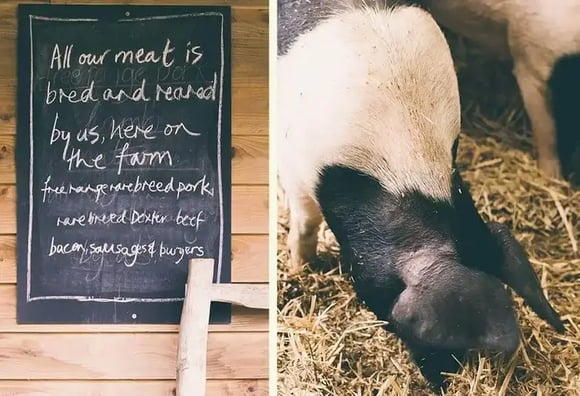
17. Start offering online delivery
Online food delivery is one of the biggest trends in the restaurant industry. Partnering with delivery apps can help bring in more customers, especially if your restaurant is in a high-demand area. Check out apps like Seamless, Grubhub, and DoorDash to see which ones operate in your area.
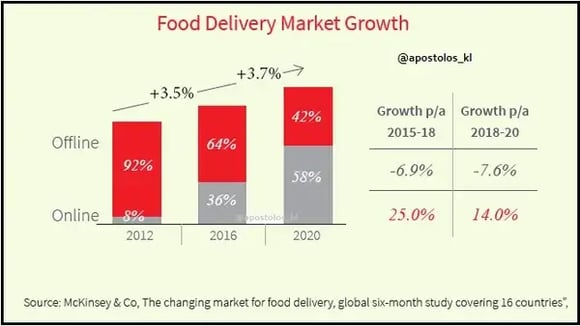
18. Get people engaged with live social media stories
Stories are a great way to show the behind-the-scenes action of your restaurant. Use this feature on platforms like Instagram and Facebook to share kitchen prep, interviews with staff, and other fun content that gives people a sneak peek into your restaurant’s vibe.
Schedule and plan your social media account ahead of time, with tools like Hootsuite.
19. Get serious about high-quality social media images
Food photos are a huge part of attracting customers on social media. If you want to stand out, make sure your food photos are high-quality and capture the irresistible appeal of your dishes. If you’re taking the photos yourself, invest some time in learning the right angles and lighting.
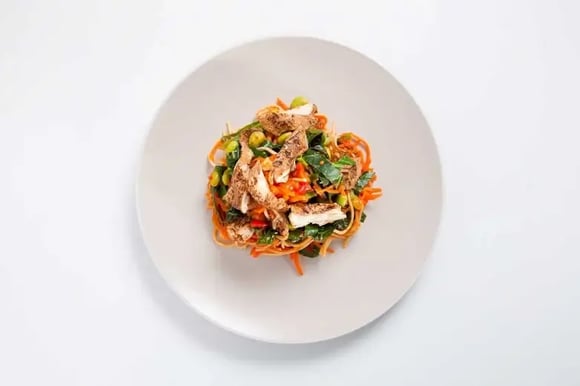
20. Amplify PR
Great reviews and write-ups from media outlets are an excellent way to boost your restaurant’s credibility. Don’t just wait for the media to come to you, amplify any good PR on your social media and website to increase your reach.
21. Encourage and/or incentivize online reviews
Encourage happy customers to leave positive reviews. You can even offer incentives like discounts or freebies for reviews. Positive reviews are one of the best ways to boost your restaurant’s reputation online.
22. Respond to online reviews
How you respond to reviews can make or break your restaurant’s reputation. If you get a negative review, respond thoughtfully, acknowledge the problem, and offer a solution. Make sure your response is public, don’t take it to DMs.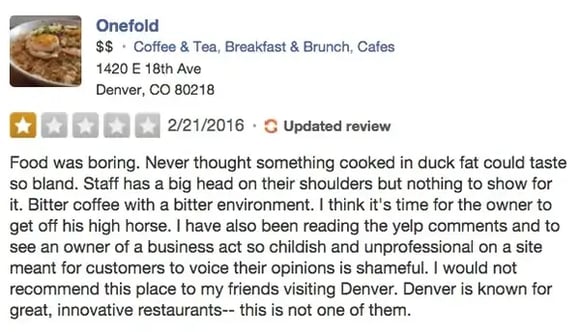
Need more advice on online reviews? Take a deep dive with our online review management guide.
Monitoring and responding to reviews proactively shows that you value customer feedback. Prompt, professional responses can boost trust and enhance your brand’s reputation.
23. Get started with blogging
A blog can be an excellent way to share your restaurant’s story and engage with customers. It doesn’t need to be long or complicated. Even small updates about menu changes, events, or behind-the-scenes content can help keep your restaurant top-of-mind.
24. Get Influencers to post on social media
Influencers can be a great way to spread the word about your restaurant. Reach out to local influencers who align with your brand and invite them to dine with you in exchange for a post. Their followers could be your next customers.
In addition to social media reach, influencer partnerships help build trust and authenticity. Hosting joint events or promotions with influencers and local businesses strengthens community ties and boosts your visibility.
25. Use the restaurant marketing framework
Marketing strategies work best when they’re part of a cohesive plan. A restaurant marketing framework helps organize your efforts into a connected system, boosting the impact of each individual strategy.
Read more about the framework and see the infographic.
26. Google ads, Facebook ads, Instagram ads
Digital ads can be effective for promoting your restaurant, but it’s important to get the targeting right. Start with platforms like Google, Facebook, and Instagram, and monitor your ad performance closely to ensure a good return on investment.
27. Build and promote your tribe on social media
Reposting customer content on social media is a great way to show appreciation and engage with your audience. It creates a two-way relationship that encourages customers to keep sharing their experiences with you. More ways to promote your restaurant.
28. Upgrade your website
Your website should be easy to navigate and mobile-friendly. Make sure key information like your menu, hours, and location is easy to find. Also, ensure that your reservation system is seamless, especially for mobile users.
29. Don't forget about Yelp!
While Google now leads the search game, Yelp still plays a big role in restaurant marketing. Maintain an optimized Yelp profile and encourage satisfied customers to leave reviews.
30. Use restaurant surveys
Surveys are a great way to gather feedback from your guests. Use them to learn what your customers like and where you can improve. With tools like Eat App’s feedback feature, you can get real-time insights to help improve the guest experience.
31. Give back to the community
Supporting local causes or offering community-focused promotions is a great way to connect with your neighborhood. Whether it’s through charity events or menu items that give back, showing your commitment to the community can boost your reputation and attract loyal customers.
32. Define your restaurant brand
Your brand identity is what makes your restaurant memorable. Start by creating a mission statement, defining your brand voice, and positioning your restaurant in the market. When you’ve established a clear brand, customers will know exactly what to expect from you.
33. Partner with local businesses and farms
Partnering with local businesses and farms can improve your menu and help build strong community ties. Collaborations with local suppliers can bring fresh, high-quality ingredients to your dishes, while partnerships with nearby businesses can expand your reach.
Such collaborations are powerful tools for brand loyalty. They highlight shared values and expand your customer base through cross-promotion.
34. Implement offline marketing strategies for your restaurant
Offline marketing still works. Consider hosting events like cooking classes or wine tastings to attract new customers. Partnering with local businesses for promotions is another great way to boost your restaurant’s visibility and community presence.
35. Create challenges and contests for customers
Engage your customers with fun challenges or contests, like photo competitions or loyalty programs. Offer prizes to encourage participation and keep customers coming back for more.
36. Expand brand awareness with a food truck
A food truck can help expand your restaurant’s reach. Take your brand to local events or festivals and attract new customers while providing a unique dining experience.
Bonus: Use WhatsApp to Engage Customers
WhatsApp messaging can be a game-changer for restaurants. With Eat App’s two-way WhatsApp messaging, you can interact directly with customers, send booking confirmations, reminders, and updates, and handle queries in real time. It’s a personal and direct way to stay connected with your guests.
Summary
Here's the restaurant marketing ideas list in full for easy reference!
1. Add reservation links to Google Business
2. Send email marketing that works
3. Send birthday reminder emails
4. Connect your front-of-house to your website with live chat
5. Try the various online ordering and reservation platforms
6. Work on the presentation of dishes so they are "Instagrammable"
7. Run coupon and discount campaigns
8. Focus on customer loyalty
9. Local online ads
10. Improve local discovery online aka Restaurant SEO
11. Have an awesome online menu
12. Restaurant Retargeting ads
13. Build an Unstoppable Brand
14. Collect and use guest data
15. SMS marketing
16. Show off your ingredients
17. Start offering online delivery
18. Get people engaged with live social media stories
19. Get serious about high-quality social media images
20. Amplify PR
21. Encourage and/or incentivize online reviews
22. Respond to online reviews
23. Get started with blogging
24. Get Influencers to post on social media
25. Use the restaurant marketing framework
26. Google ads, Facebook ads, Instagram ads
27. Build and promote your tribe on social media
28. Upgrade your website
29. Don't forget about Yelp!
30. Use restaurant surveys
31. Give back to the community
32. Define your brand
33. Partner with local businesses and farms
34. Implement offline marketing strategies for your restaurant
35. Create challenges and contests for customers
36. Expand brand awareness with a food truck
Sign up for your free Eat App account and start implementing some of these strategies today!
FAQs
How to improve restaurant marketing?
To improve restaurant performance, start by reviewing sales data to identify best-sellers and worst-sellers among menu items, along with peak and slow times for targeted promotions. Analyze customer purchasing habits, including average spend, popular dishes, and the ratio of new versus repeat customers, to tailor offerings effectively.
Research nearby competitors to understand their menu, pricing, promotions, and special events. Finally, explore additional revenue opportunities such as introducing new menu items, offering catering services, hosting private events, organizing themed nights, and implementing limited-time offers or cross-selling options to boost overall sales.
What does a restaurant marketing manager do?
Develop and execute comprehensive PR and marketing strategies for both the short and long term to boost revenue, attract more visitors, and enhance brand awareness. Organize and carry out promotional campaigns to increase visibility and encourage more foot traffic.














.webp?width=200&name=v2-15mknc-qpw1b%20(1).webp)
.webp?width=200&name=v2-15kqni-p0exl%20(1).webp)
-1.png?width=1812&height=1072&name=TripAdvisor%20%26%20More%20Bookings%20(1)-1.png)
-2.png?width=1812&height=1072&name=Google%20Bookings%20(1)-2.png)


-1.png?width=200&name=TripAdvisor%20%26%20More%20Bookings%20(1)-1.png)
-2.png?width=200&name=Google%20Bookings%20(1)-2.png)
-1.png?width=200&name=Instagram%20Bookings%20(1)-1.png)
-1-png.webp?width=200&name=Facebook%20Integration%20Rectangle%20(1)-1-png.webp)







.webp?width=200&name=download%20(1).webp)
%20(1)-2.webp?width=200&name=Eat%20(34)%20(1)-2.webp)
%20(1)-2.webp?width=200&name=Eat%20(18)%20(1)-2.webp)





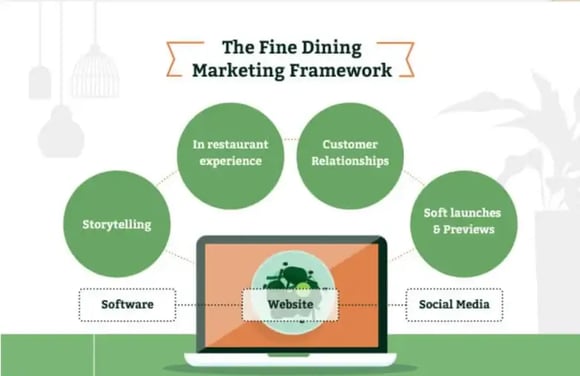
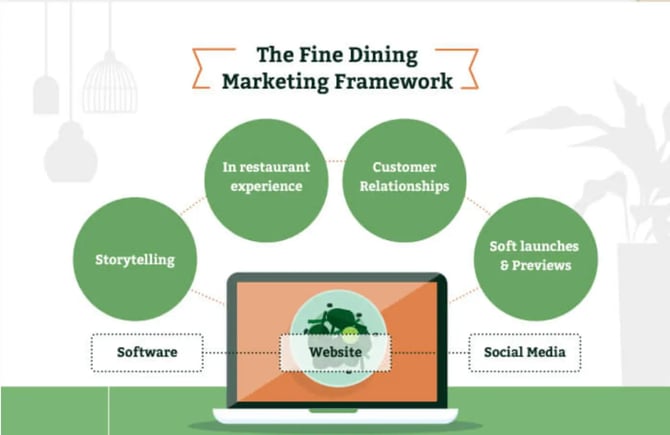

%20(1)-1.webp?width=314&height=175&name=Eat%20(45)%20(1)-1.webp)
%20(1).webp?width=314&height=175&name=Eat%20(53)%20(1).webp)
.webp?width=314&height=175&name=image19%20(1).webp)
%20(1).webp?width=314&height=175&name=Eat%20(66)%20(1).webp)


.webp?width=144&height=72&name=Eat%20App%20Logo%20(3).webp)